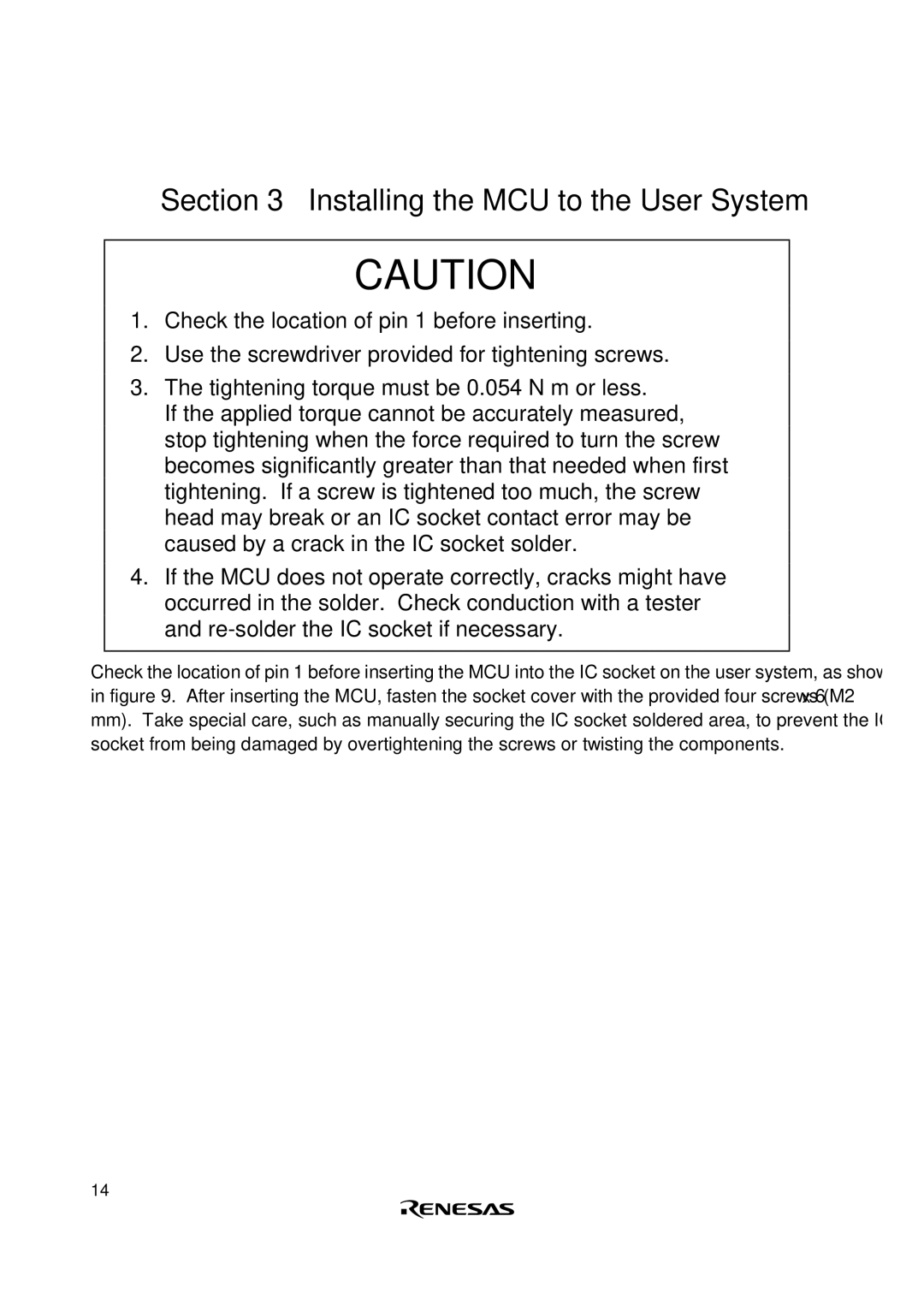HS2633ECH61H specifications
The Renesas HS2633ECH61H is a highly integrated microcontroller designed for advanced automotive applications. This device is built on Renesas' robust RISC architecture, which ensures efficient processing and power management, making it an ideal choice for demanding environments where reliability and performance are paramount.One of the standout features of the HS2633ECH61H is its 32-bit architecture, which enables it to handle complex tasks and computations efficiently. With a clock frequency of up to 120 MHz, this microcontroller can perform a wide range of operations swiftly, ensuring optimal system performance without compromising on energy efficiency.
The HS2633ECH61H is equipped with multiple input/output (I/O) interfaces, including SPI, I2C, and UART, providing versatile communication options for external peripherals and devices. These interfaces enable seamless integration with various sensors, actuators, and other components, which are essential for automotive applications such as engine control, transmission systems, and advanced driver-assistance systems (ADAS).
For memory capacity, the HS2633ECH61H offers a significant amount of Flash and RAM. With up to 512 KB of Flash memory and 64 KB of SRAM, it provides ample space for storing complex algorithms, control logic, and real-time data processing. This combination of memory resources ensures that developers can implement sophisticated software solutions while maintaining performance stability.
Moreover, the HS2633ECH61H features built-in safety mechanisms, following the ISO 26262 standard for functional safety in automotive applications. This includes safety management features such as watchdog timers, error correction codes (ECC), and redundancy in certain functions, which are critical for maintaining system integrity in safety-critical environments.
Another important aspect of the HS2633ECH61H is its low power consumption. Designed with power-saving modes, it allows the microcontroller to operate efficiently and extend the battery life of automotive systems. This is particularly significant as vehicles increasingly incorporate various electronic components, making power management a critical consideration.
In summary, the Renesas HS2633ECH61H microcontroller stands out due to its powerful 32-bit architecture, extensive memory options, versatile communication interfaces, and built-in safety features. Combined with its energy-efficient design, this microcontroller is well-suited for modern automotive applications, providing a reliable foundation for next-generation vehicle control systems. Its ability to manage complex tasks while ensuring safety and efficiency makes it a valuable asset in the rapidly evolving automotive market.

